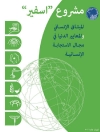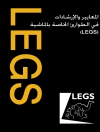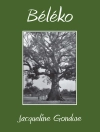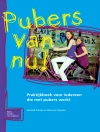This edited book explores languages and cultures (or linguacultures) from a translation perspective, resting on the assumption that they find expression as linguacultural worldviews. Specifically, it investigates how these worldviews emerge, how they are constructed, shaped and modified in and through translation, understood both as a process and a product. The book’s content progresses from general to specific: from the notions of worldview and translation, through a consideration of how worldviews are shaped in and through language, to a discussion of worldviews in translation, both in macro-scale and in specific details of language structure and use. The contributors to the volume are linguists, linguistic anthropologists, practising translators, and/or translation studies scholars, and the book will be of interest to scholars and students in any of these fields.
Innehållsförteckning
Chapter 1: Introduction (Adam Głaz).- PART I: SETTING THE SCENE: WORLDVIEWS EMERGING, WORLDVIEWS EXPRESSED.- Chapter 2: Linguistic Relativity in the Age of Ontology: How Language Shapes Worldview, and Ways of Being, Even Going Beyond the Human (Sean O’Neill).- Chapter 3: Translating a Worldview in the
Longue Durée: The Tale of ’the Bear’s Son’ (Roslyn M. Frank).- PART II: RETHINKING TRANSLATION.- Chapter 4: Translation as Philology as Love (John Leavitt).- Chapter 5: Bourdieu’s
Distinction (Translating) Language as a Means of Expressing Worldviews (Nigel Armstrong).- Chapter 6: The Sociological Turn in Translation Studies and Pierre Bourdieu’s Sociology: A Case of Convergence of Divergence? (Patrycja Karpińska).- PART III: THE SHAPING OF WORLDVIEWS: FOCUS ON PHILOSOPHY AND RELIGION.- Chapter 7: Translational Roots of Western Essentialism (Piotr Blumczynski).- Chapter 8: Buber/Rosenzweig’s and Meschonnic’s Bible Translations: Biblical Hebrew as Transformer of Language Theory and Society (Marko Pajevič).- Chapter 9: St. Petro Mohyla’s Catechism in Translation: A Term System via the Prism of Axiological Modelling and Cultural Matrix (Tara Shmiher).- Chapter 10: Borrowings and the Linguistic Worldview or How to Domesticate Foreignness (Jerzy Bartmiński).- PART IV: TRANSLATING WORLDVIEWS ACROSS LANGUAGES AND CULTURES.- Chapter 11: Do Paradoxes Have a Place in Worldviews? Conceptual Configurations of ’Heart’ and Their Contradictions in English and Other Languages (James W. Underhill)- Chapter 12: Traces of Speaker’s Worldview in Translations of EU Parliamentary Debate (Anna Wyrwa).- Chapter 13: The Cultural Semantics of Untranslatables: Linguistic Worldview and the Danish Language of Laughter (Carsten Levisen).- PART V: IT’S ALL ABOUT THE DETAILS: FOCUS ON DICTION, GRAMMAR AND STYLE.- Chapter 14: Norwegian Translations of
Anne of Green Gables: Omissions and Textual Manipulations (Susan Erdmann and Barbara Gawrońska Pettersson).- Chapter 15:Cultural References and Linguistic Exponents of Gender in the Norwegian Translation of Michal Witkowski’s
Lubiewo (Barbara Gawrońska Pettersson).- Chapter 16: The Many Faces of
Alice: Twists and Turns of Lewis Carroll’s Classic in Poland (Monika Adamczyck-Garbowska).- Chapter 17: Historical Narrative as a Cultural Text (Elżbieta Tabakowska).
Om författaren
Adam Głaz is Associate Professor of English and Linguistics at Maria Curie-Skłodowska University (UMCS) in Lublin, Poland. He researches cognitive and cultural linguistics, linguistic worldview, and translation.












